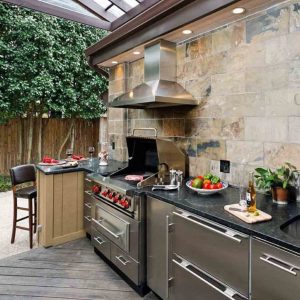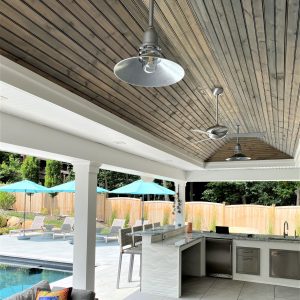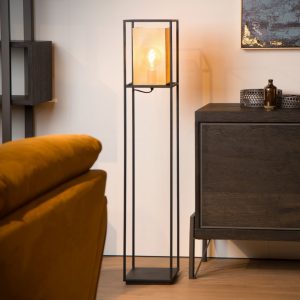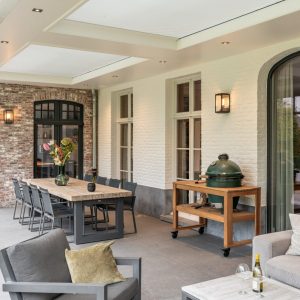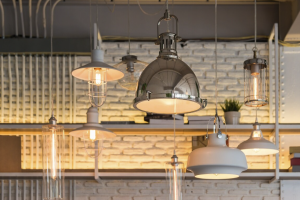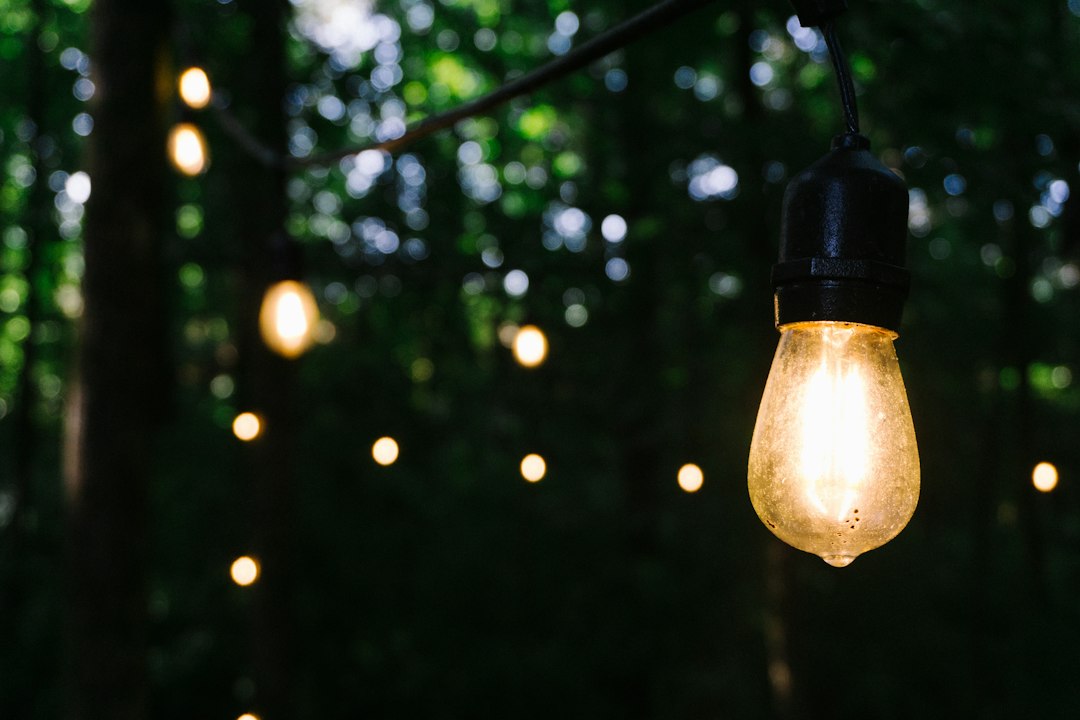
Outdoor lighting is an essential element of any well-designed outdoor space. It not only enhances the aesthetics of your property but also provides safety and security. Whether you have a small patio or a sprawling backyard, the right outdoor lighting can transform your space into a welcoming and functional area for both daytime and nighttime use.
One of the key benefits of outdoor lighting is increased safety. Well-lit pathways, stairs, and entrances can prevent accidents and injuries by providing visibility in the dark. Additionally, outdoor lighting can deter potential intruders by eliminating hiding spots and making your property less attractive to criminals.
In addition to safety, outdoor lighting also adds a layer of security to your home. A well-lit exterior can discourage burglars and make it easier for you to identify any suspicious activity. Motion sensor lights are particularly effective in this regard, as they automatically turn on when someone approaches your property.
Furthermore, outdoor lighting can greatly enhance the aesthetics of your outdoor space. By strategically placing lights, you can highlight architectural features, landscaping elements, and other focal points in your yard. This not only adds visual interest but also creates a warm and inviting atmosphere for entertaining guests or simply enjoying your outdoor space.
Types of Outdoor Lighting: Choosing the Right Option for Your Space
When it comes to outdoor lighting, there are several options to choose from. Each type has its own advantages and disadvantages, so it’s important to consider your specific needs and preferences before making a decision.
Floodlights are a popular choice for illuminating large areas such as driveways or backyard spaces. They provide a wide beam of light that can cover a significant area. However, floodlights can be quite bright and may cause glare if not properly positioned or shielded.
Path lights are another common type of outdoor lighting. These fixtures are typically low to the ground and are used to illuminate walkways, driveways, and garden paths. Path lights are available in a variety of styles and can add a decorative element to your outdoor space. However, they may not provide enough light for larger areas and may require more frequent maintenance due to their proximity to the ground.
String lights have become increasingly popular in recent years for their ability to create a festive and cozy atmosphere. These lights are typically hung overhead, creating a warm and inviting glow. String lights are versatile and can be used in a variety of outdoor spaces, from patios to pergolas. However, they may not provide enough light for functional tasks such as cooking or reading.
When choosing the right type of outdoor lighting for your space, consider factors such as the size of the area you want to illuminate, the purpose of the lighting (e.g., safety, security, aesthetics), and your personal style preferences. It’s also important to consider the power source for your lighting fixtures. While some options may require professional installation and wiring, others can be easily installed and powered by solar energy.
Planning Your Lighting Design: Tips and Tricks for a Successful Project
Before diving into your outdoor lighting project, it’s important to take some time to plan and design your lighting layout. This will ensure that you achieve the desired results and create a cohesive and visually appealing space.
Start by considering the size and layout of your outdoor space. Take note of any existing features or structures that you want to highlight or incorporate into your lighting design. This could include trees, shrubs, architectural details, or even seating areas.
Next, think about the purpose of the lighting. Are you primarily looking for safety and security? Or do you want to create a specific ambiance or mood in your outdoor space? Understanding your goals will help you determine the type and placement of your lighting fixtures.
Consider the style of your home when choosing lighting fixtures. You want your outdoor lighting to complement the overall aesthetic of your property rather than clash with it. For example, if you have a modern home, you may opt for sleek and minimalist lighting fixtures, while a more traditional home may call for lantern-style lights.
To create a cohesive lighting design, it’s important to think about the overall flow and balance of your outdoor space. Avoid placing all your lights in one area or using too many different styles or types of fixtures. Instead, aim for a balanced distribution of light throughout your space, with a mix of task lighting, accent lighting, and ambient lighting.
Creating Ambiance: Using Lighting to Set the Mood
Outdoor lighting can do more than just provide visibility; it can also create different moods and atmospheres in your outdoor space. By strategically placing lights and using different types of fixtures, you can transform your backyard into a romantic oasis, a festive party venue, or a tranquil retreat.
To create a romantic ambiance, consider using soft and warm lighting. String lights or lanterns hung overhead can create a cozy and intimate atmosphere. You can also use candles or flameless LED candles to add a touch of romance to your outdoor space.
For a festive atmosphere, consider using colorful string lights or decorative lanterns. These can be hung from trees or strung along fences or pergolas to create a festive and celebratory mood. You can also use spotlights to highlight specific areas or features, such as a dance floor or a food station.
If you’re looking to create a relaxing and tranquil outdoor space, opt for soft and diffused lighting. This can be achieved with the use of path lights or well lights placed strategically around your garden or seating area. You can also incorporate water features such as fountains or ponds, which can be illuminated from within to create a soothing and calming effect.
Remember that the key to creating the right ambiance is to strike a balance between different types of lighting. Combine task lighting for functional purposes with accent lighting to highlight specific features, and ambient lighting to create an overall mood. Experiment with different combinations and placements to find the perfect balance for your outdoor space.
Highlighting Features: Accent Lighting for Your Outdoor Space
Accent lighting is a great way to draw attention to specific features in your outdoor space. Whether it’s a beautiful tree, a sculpture, or an architectural detail, accent lighting can help create a focal point and add visual interest to your yard.
When choosing the right type of accent lighting, consider the size and shape of the feature you want to highlight. For larger trees or sculptures, you may opt for floodlights or well lights placed at the base of the feature. These lights can be angled upwards to create a dramatic effect.
For smaller features or details, such as a garden statue or a decorative wall, consider using spotlights or wall-mounted fixtures. These can be positioned to shine directly on the feature, creating a focused beam of light.
In addition to choosing the right type of accent lighting, placement is also key. Experiment with different angles and distances to find the most flattering and impactful position for your lights. You may also want to consider using multiple lights to create a layered effect and add depth to your outdoor space.
Safety First: Illuminating Walkways and Stairs

Illuminating walkways and stairs is not only important for safety reasons but also for enhancing the overall aesthetics of your outdoor space. Well-lit pathways and stairs can prevent accidents and injuries by providing visibility in low-light conditions.
When it comes to illuminating walkways, path lights are a popular choice. These fixtures are typically low to the ground and provide a soft and diffused light that guides you along the path. Path lights are available in a variety of styles and can be easily installed along the edges of your walkway.
Another option for illuminating walkways is recessed or step lights. These fixtures are installed directly into the ground or into the steps themselves, providing a subtle and integrated lighting solution. Recessed lights can be particularly effective for illuminating stairs, as they provide visibility without creating glare or harsh shadows.
When installing lighting fixtures along walkways and stairs, it’s important to consider the placement and spacing. Aim for a consistent and even distribution of light to ensure that the entire path is well-lit. Avoid placing lights too close together, as this can create a “runway” effect. Instead, space them out evenly to create a natural and inviting flow.
Energy Efficiency: Making the Most of Your Lighting System
In today’s environmentally conscious world, energy efficiency is an important consideration when it comes to outdoor lighting. Not only does energy-efficient lighting help reduce your carbon footprint, but it can also save you money on your energy bills.
One of the most effective ways to maximize the energy efficiency of your outdoor lighting system is to use LED bulbs. LED bulbs are more energy-efficient than traditional incandescent bulbs and can last up to 25 times longer. They also produce less heat, which reduces the risk of fire hazards.
In addition to using LED bulbs, consider installing timers or motion sensors for your outdoor lights. Timers allow you to set specific times for your lights to turn on and off, ensuring that they are only in use when needed. Motion sensors are particularly useful for security lighting, as they only activate when someone approaches your property.
Another way to increase energy efficiency is to choose solar-powered lighting fixtures. Solar lights are powered by the sun’s energy and do not require any wiring or electricity. They are easy to install and can be placed anywhere in your outdoor space as long as they receive adequate sunlight during the day.
By maximizing the energy efficiency of your outdoor lighting system, you can reduce your environmental impact and save money in the long run. It’s a win-win situation that benefits both you and the planet.
Maintenance and Upkeep: Keeping Your Outdoor Lighting in Top Shape
Proper maintenance and upkeep are essential for keeping your outdoor lighting system in top shape. Regular maintenance not only ensures that your lights are functioning properly but also extends their lifespan and effectiveness.
One of the most important maintenance tasks is cleaning your lighting fixtures. Over time, dirt, dust, and debris can accumulate on the surface of your lights, reducing their brightness and effectiveness. To clean your fixtures, simply wipe them down with a soft cloth or sponge and a mild detergent. Avoid using abrasive cleaners or scrub brushes, as these can damage the finish or lens of your lights.
In addition to cleaning, it’s important to regularly check your outdoor lighting system for any signs of damage or wear. Inspect the wiring for any frayed or exposed wires, and replace any damaged bulbs or fixtures. If you notice any issues with your lighting system, it’s best to address them as soon as possible to prevent further damage or safety hazards.
Replacing bulbs is another important maintenance task. Over time, bulbs can burn out or become dimmer, reducing the effectiveness of your lighting system. Replace any burnt-out bulbs with new ones of the same wattage and type. It’s also a good idea to keep spare bulbs on hand so that you can quickly replace them when needed.
Finally, consider scheduling regular professional inspections for your outdoor lighting system. A professional can identify any potential issues or areas for improvement and provide expert advice on how to maintain and optimize your lighting system.
DIY vs. Professional Installation: Which Option is Right for You?
When it comes to installing outdoor lighting, you have two main options: DIY or professional installation. Each option has its own pros and cons, so it’s important to consider your specific needs and budget before making a decision.
DIY installation can be a cost-effective option if you have the necessary skills and tools. It allows you to have full control over the design and placement of your lighting fixtures. DIY installation also gives you the flexibility to work at your own pace and make adjustments as needed.
However, DIY installation can be time-consuming and challenging, especially if you have little to no experience with electrical work. It may require digging trenches for wiring, installing junction boxes, and connecting wires. If you’re not confident in your abilities or don’t have the necessary tools, it’s best to hire a professional.
Professional installation offers several advantages. First and foremost, it ensures that your outdoor lighting system is installed correctly and safely. Professionals have the knowledge and expertise to design and install a system that meets your specific needs and complies with local building codes.
Professional installation also saves you time and effort. Instead of spending hours researching and learning about electrical work, you can leave the job to the experts and focus on other aspects of your outdoor space. Additionally, professionals often have access to a wider range of lighting fixtures and can provide recommendations based on their experience.
Of course, professional installation comes at a cost. Hiring a professional can be more expensive than doing it yourself, especially if you have a large outdoor space or complex lighting requirements. However, it’s important to weigh the cost against the potential risks and benefits. If safety, quality, and peace of mind are important to you, professional installation may be the best option.
Enjoying Your Outdoor Space with Beautiful Lighting Design
In conclusion, outdoor lighting is an essential element of any well-designed outdoor space. It provides safety, security, and aesthetics, enhancing the functionality and enjoyment of your yard or patio.
When choosing outdoor lighting, consider the different types available and their pros and cons. Plan your lighting design carefully, taking into account the size and layout of your space, the purpose of the lighting, and the style of your home. Use lighting strategically to create different moods and atmospheres, and highlight specific features in your outdoor space.
Remember to prioritize safety by illuminating walkways and stairs. Maximize the energy efficiency of your lighting system by using LED bulbs, timers, and solar-powered fixtures. Regular maintenance and upkeep are essential for keeping your outdoor lighting in top shape.
Finally, consider whether DIY or professional installation is the right option for you. Regardless of which option you choose, the most important thing is to take action and start planning your own outdoor lighting project. With the right lighting design, you can create a beautiful and functional outdoor space that you can enjoy day and night.

